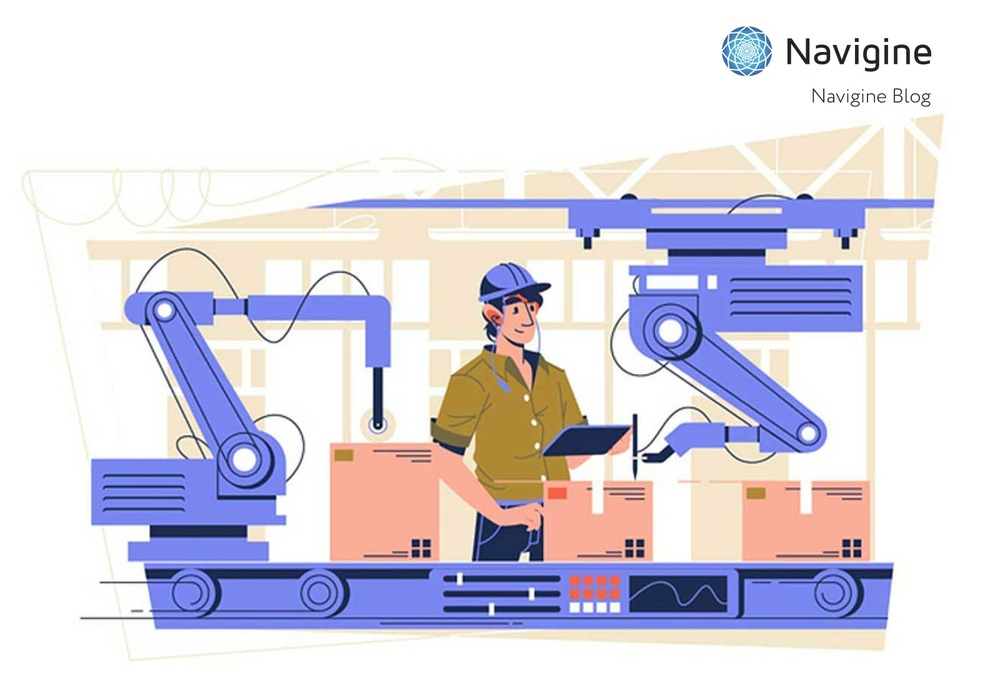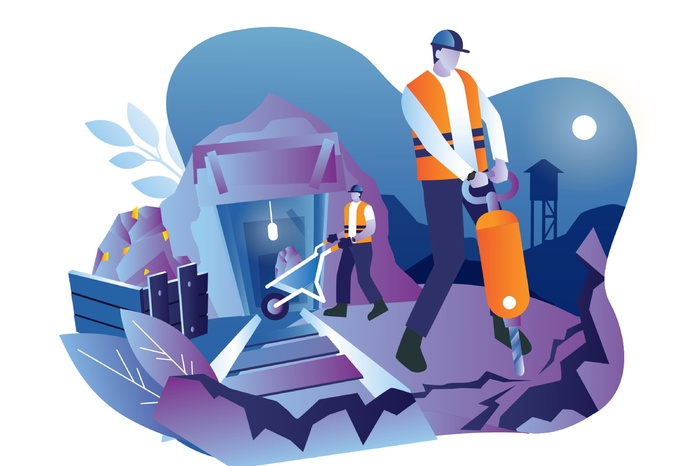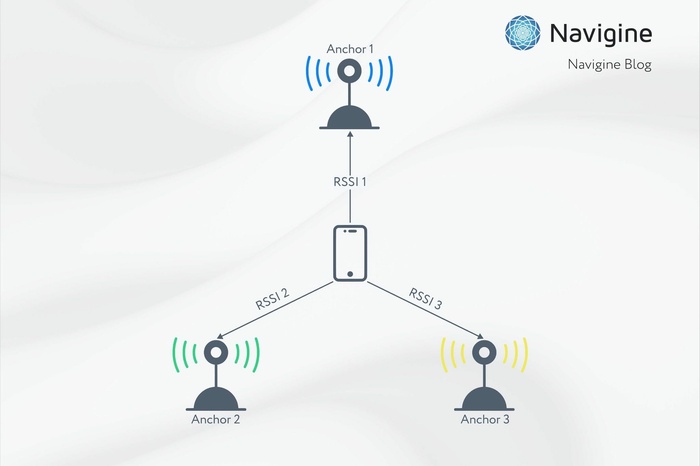Img Source - Kit8
In this day and age, any company is always looking to increase efficiency and profits. One often overlooked aspect of achieving these goals is asset monitoring. When it’s implemented, the business reduces downtime and repair costs and extends the life of its equipment. In this article, we will be looking at the benefits of asset monitoring solutions.
What is asset monitoring (tracking)?
Asset tracking is a combination of software and hardware that allow for real-time object tracking. Tools based on IoT technology determine the location of equipment, determine its state, control movement, and correct routes. Thanks to a system like this, the management can quickly find out about malfunctions, as well as plan repair or maintenance.
To assess the popularity of monitoring among companies, let's turn to statistics. According to Mordor Intelligence, the size of the global asset tracking and monitoring market in 2023 is estimated at $21.09 billion. According to forecasts, by 2028, its average growth rate will be 13.91%, and the total volume is supposed to reach $40.45 billion. The reason for this success lies in the benefits that the system gives to businesses:
- improving the safety of people and equipment, minimizing insured events;
- improving business efficiency;
- receiving valuable real-time analytics;
- optimizing logistics.
An asset monitoring system can be easily implemented and configured at any company. It’s suitable for use in almost all cases, whether it be manufacturing, healthcare, retail, or education. If needed, the platform is adapted to the specific needs of the customer, and the software is easily integrated into already existing applications for mobile devices.
Watch our webinar on "Indoor Positioning and Asset Tracking for Warehouses: Minew and Navigine Solutions":
Opportunities when implementing an asset monitoring system
Asset monitoring opens up opportunities for business process development. It can be used to track the locations of vehicles, products, or raw materials, reduce unnecessary costs, minimize theft, and perform other tasks.
Equipment protection against theft
Using an asset monitoring system improves the visibility of objects and provides effective protection against theft. Installing sensors on equipment allows the management to control any movement, including its removal outside buildings or zones. If needed, sound signals or push notifications are used to warn staff about objects taken outside the company territory.
Increased equipment life
After asset tracking and monitoring are implemented, special sensors transmit information about the current state of the equipment. Thanks to this, the management can understand whether the equipment is working properly and whether it needs repair. The transmitted data allows you to minimize equipment downtime, prevent faults, and extend the life of assets.
Get real-time asset availability information
The platform constantly informs users about the availability of equipment at the moment. If the desired object is readily available, then it can be used immediately, without wasting time searching. If it’s not, then the system will develop a plan to use the technology with the focus shifting to other tasks.
Reducing unnecessary costs associated with equipment
Monitoring solutions ensure cost savings in production, reduce maintenance costs and improve asset utilization. This is achieved thanks to the following:
- accurate detection of anomalies and equipment malfunctions;
- regular measurement of equipment efficiency indicators;
- failure prediction.
Predicting maintenance and equipment failure
When asset monitoring services are implemented, maintenance can be planned according to the last checkup and the KPIs of the equipment (service life, mileage). In order not to miss the maintenance time, the system allows you to set up messages via SMS, email, or push notifications that will remind you to perform an inspection.
Monitoring centralization
Tracking information is much easier if it’s all in one database. The asset tracking system ensures centralized monitoring and provides up-to-date data that’s updated in real time. After implementing the platform into the infrastructure, managers can control both volumes and locations of assets using a convenient control panel.
Equipment usage control
Asset tracking systems allow you to monitor the location of staff/employees. With their help, you can control the following:
- time of use of equipment by employees;
- driving style;
- movement routes within the territory;
- handling of assets (whether the staff uses the equipment properly and whether they act within the limits of their authority).
Tracking the location of products and raw materials
The platform is optimally suited for warehouses and stores. It can accurately track the location of raw materials or products, reducing valuable time searching for the right items. This approach minimizes the likelihood of asset loss or misuse, which positively impacts overall productivity.
Vehicle tracking
With the help of this technology, it’s possible to accurately track the movement of forklifts, tractors, and other types of vehicles across the territory. Constant control over the equipment makes it possible to correct routes and prevent collisions with assets and staff.
How the asset monitoring system works
To implement asset monitoring solutions, you have to use special software and hardware. Labels, tags, or beacons are installed within buildings or on movable equipment, and then they send signals to readers (gateways). After that, these pulses are transmitted to the server for processing, and then the location data is sent to the user's smartphone or PC.
Now, let’s take a look at the most popular technologies that can be used for object tracking.
Bluetooth® LE
Bluetooth® LE is one of the most sought-after technologies for asset tracking. It provides high monitoring accuracy (up to 3 ft) and is described by economical energy consumption. The system is based on beacons, which are located in different places and make it easy to determine the location of assets in real time. To see how the tracking system works, you can request a demo version at the link: https://navigine.com/demo-online/
Wi-Fi
Wi-Fi technology combines security and affordable implementation cost. The tracking system can be installed based on an existing infrastructure, which provides significant savings for the business. The accuracy of location tracking when using Wi-Fi is 10-16 ft.
UWB
Ultra Wideband is the most accurate technology that detects objects at a distance of up to 12 inches. It’s based on sending high-frequency pulses that can propagate at frequencies up to several GHz. UWB is energy efficient and does not require line-of-sight, but is expensive to implement and is typically used to monitor high-value assets.
Wireless Mesh
Wireless Mesh is a wireless communication network built on a mesh topology. It’s capable of supporting up to 65,000 devices simultaneously, which is why it’s often used in manufacturing. The advantages include:
- working at several frequencies at once;
- affordable tags;
- low power consumption.
RFID
RFID is often used in retail and warehouses. Asset monitoring is carried out using tags that are placed on large and valuable assets. Labels can be passive or active. The former operate without an independent power source and send signals to an antenna, which transmits them to readers. The latter operate on batteries and rely on Bluetooth beacons, which provide reading and transmitting data to the server.
QR codes/barcodes
Barcodes or QR codes are special labels that are attached to items. Information about assets can be read from them using electronic scanners. The differences between the codes lie in their flexibility and capacity. QR can be read at any angle, barcodes can only be read horizontally.
GPS
GPS is used only in open areas. Tracking is carried out using special receivers that can automatically collect data about objects from satellites. In most cases, GPS is used to monitor cars on the roads, but if necessary, the navigation system can be implemented at companies for tracking the territory (for example, in parking lots or open storage areas).
An example of effective asset monitoring
To clearly understand how asset tracking and monitoring are implemented, let's take a warehouse tracking case that was created by Navigine in collaboration with MOKOSmart as an example. Our specialists were faced with the task of solving problems such as difficulties in finding products and equipment, low staff efficiency, lack of warehouse navigation, and emergency notification systems. Specifically for this business, we have selected the optimal set of hardware and developed a tracking system that can control the movement of objects and position products on the shelves.
Beacons, wearable devices, and Bluetooth® LE gateways were used to implement the platform. Warehouse workers got access to digital maps, which allowed them to build routes to points of interest. Thanks to implementing the platform into the company's infrastructure, staff efficiency increased by 20%, and managers were able to better organize the space.
Choose Navigine if you want to track assets at your company in real time. We will provide effective monitoring tools and the necessary technical support. To learn more about the system and the specifics of its implementation, fill out the form on our website or book a free Zoom demo.




